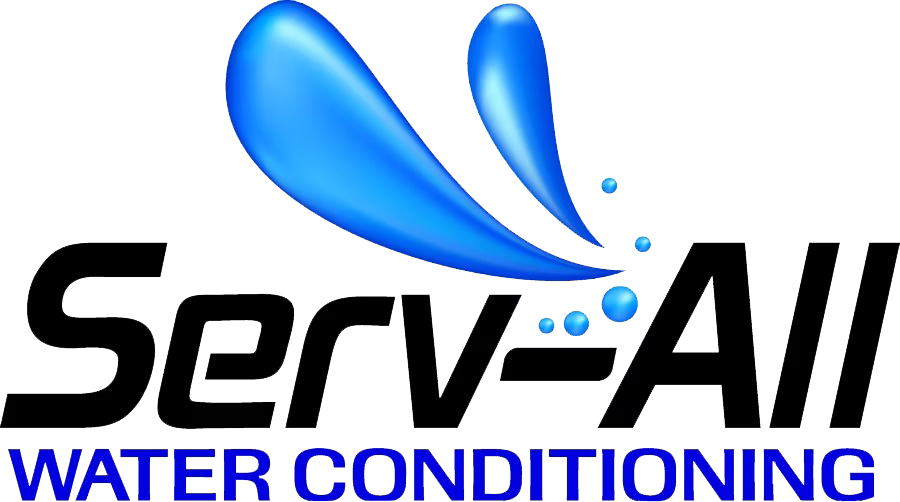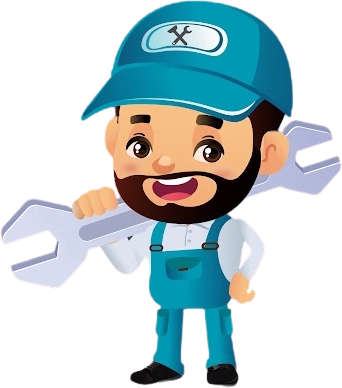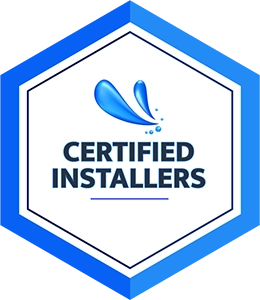Frequently Asked Questions About Water Conditioning
You use water every day for drinking, cooking, bathing, laundry, and more. It’s important to know what you’re putting into your body and using around your home. We’ve assembled a collection of the most important and common questions we encounter as a water conditioning and softener company in Las Vegas. Hopefully, these questions will address your most pressing concerns, but if you still need help, don’t hesitate to reach out to our specialists.
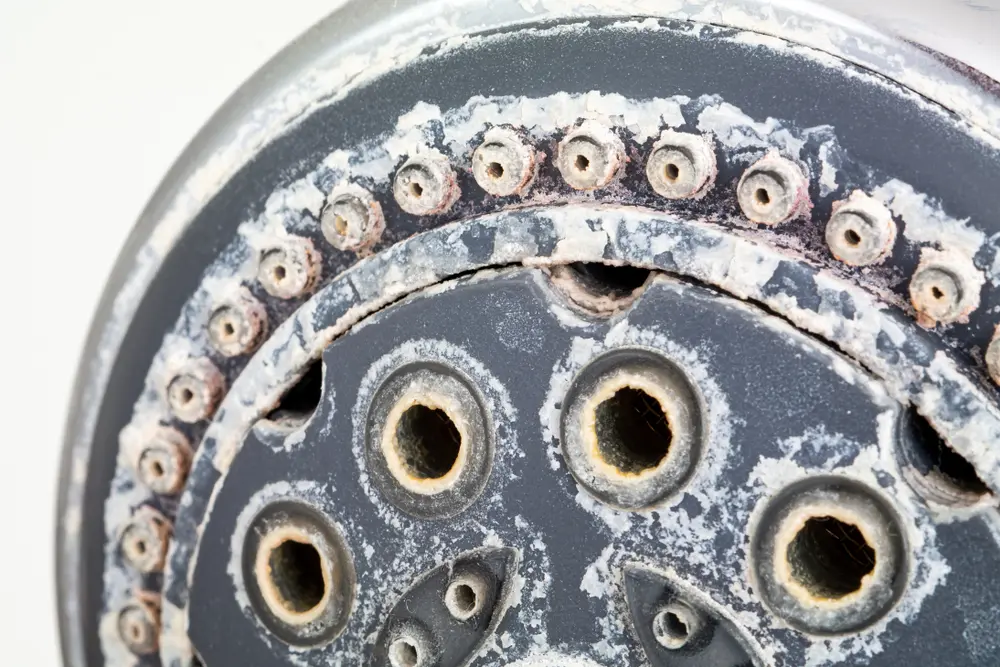
01. Hard Water Questions
How Can I Tell if My Water Is Hard?
There are several signs that can indicate whether your water is hard or not. One of the most common signs is soap scum, a white substance commonly found on surfaces like sinks and bathtubs. Hard water can also cause faucets and showerheads to become clogged with mineral deposits, and it can leave stains on clothes and dishes. You may also notice a decrease in the effectiveness of your detergents and soaps as they struggle to lather in hard water. If you’re unsure whether your water is hard, you can contact your local water utility for more information or schedule water testing services with Serv-All Water Conditioning.
What Is Considered Hard Water?
Water is considered hard if it contains high levels of dissolved minerals like calcium, magnesium, and manganese. The hardness of water is typically measured in grains per gallon (GPG) or parts per million (ppm). Here’s a breakdown of the different levels of water hardness:
- Treated (or softened water) = 0
- Slightly hard = 1-2 grains per gallon (total grains x 17.1 equals ppm)
- Medium Hard = 3-7 grains per gallon (total grains x 17.1 equals ppm)
- Hard = 7-10.5 grains per gallon (total grains x 17.1 equals ppm)
- Extremely Hard Water = 10.5+ grains per gallon (total grains x 17.1 equals ppm)
Note: Each ppm of iron equals 4 grains per gallon of hardness.
Remember, the higher the levels of dissolved minerals, the harder the water is considered to be. If you still have questions regarding hard water, please email us or call us anytime.
How Does a Softener Remove Hardness From Water?
Water hardness is reduced through a process called ion exchange. As the water passes through a water softening device containing a bed of resin, the hardness (calcium and magnesium) present in the water is exchanged or swapped for the sodium found in the resin. When the available sodium has all been exchanged for calcium and magnesium, the resin must be regenerated. Common salt is used to replenish the supply of sodium in the resin, and the hardness minerals are flushed as waste.
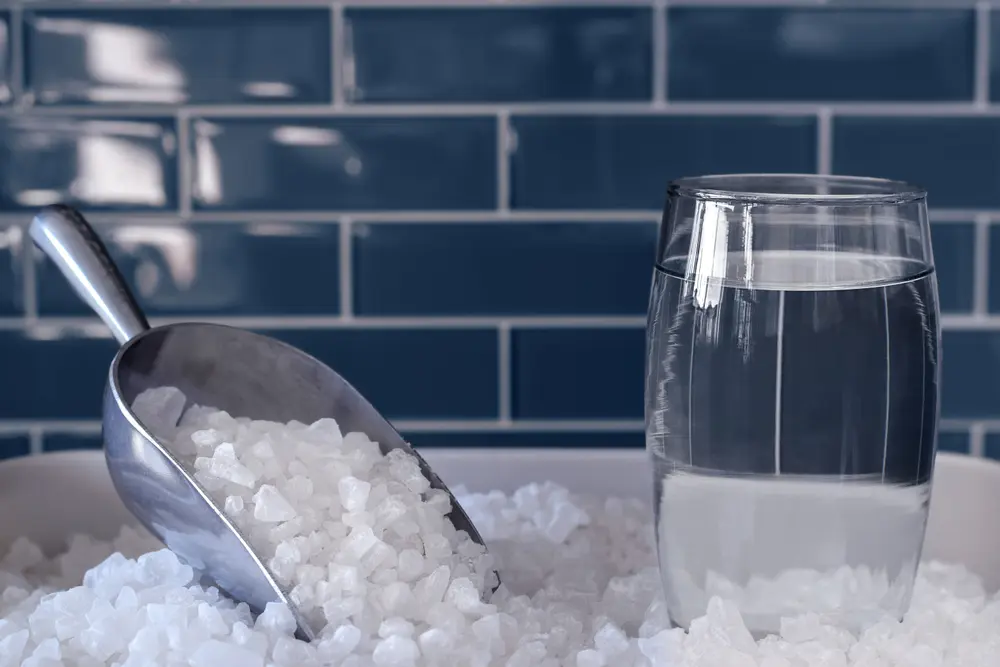
02. Water Softener Questions — General
How Often Should I Clean the Water Softener Brine Tank?
You do not need to clean out a brine tank in a water softener system. The only exceptions to this rule are if you use a salt product high in water-insoluble matter or the system experiences a major malfunction. If there is a buildup of insoluble matter in the resin, the reservoir should be cleaned out to prevent softener malfunction.
How Much Salt Will I Use?
If your average water usage is 75 gallons per day per person, you will use an average of 48 to 85 pounds of salt per month, which is very little in comparison to most older systems that regenerate based on days instead of gallons used.
Why Do I Need a Water Softener?
You may need a water softener if your water is hard and you want to reduce the negative effects it has on your home and daily life. Hard water can cause mineral buildup in pipes and appliances, leading to decreased efficiency and shortened lifespan. It can also leave spots and stains on dishes and clothing, make soap and detergents less effective, and leave your skin feeling dry and itchy.
Residential water softeners remove the dissolved minerals that cause hardness, resulting in cleaner and softer water throughout your home. A water softener can help save you money on repairs and replacements of appliances and plumbing fixtures, improve the effectiveness of your cleaning products, and provide softer and more manageable hair and skin.
At Serv-All Water Conditioning, we custom-build all of our water treatment systems based on the home’s water quality and the customer’s needs and wants. Because of this, we have the capability to design a system to remove chlorine, chloramines, and a broad spectrum of other potentially harmful contaminants found in tap water to keep your family happy and healthy.
Can Soft Water Be Used for Cooking and Coffee-Making?
Yes, soft water can be used for cooking and making coffee. It may even improve the taste by removing excess minerals that can affect flavor.
Why Is a Water Softener Better for Me and My Pocketbook?
- Money Stretcher: Hard water leaves nasty stains behind that require harsh chemicals and detergents to remove. With soft water flowing through your faucets, you don’t have to worry about these stains, reducing the cost of your cleaning supplies.
- Dish Sparkler: Tired of streaks and spots on glassware and dishes? Conditioned water eliminates the problem and helps your dishwasher last longer, too!
- Hand Soother: Red, roughened hands are usually the by-product of hard water. Conditioned water caresses and doesn’t irritate.
- Clothes Brightener: Clothes last longer and come out fresher, cleaner, and softer when washed in conditioned water. Colors stay brighter, too.
- Body Refresher: Bring conditioned water to your bath or shower, and you’ll feel a refreshing difference, cleaning faster and without soap buildup on your skin.
- Face Saver: Say goodbye to razor burn as your razor glides smoothly over your soft, water-conditioned face. Both your skin and blades will last longer.
- Hair Pamperer: A shampoo combined with conditioned water revives hair color and makes it more radiant and manageable.
- Faucet Preserver: Hard water scale corrodes and plugs valves in water-using appliances, shortens service life, and costs you money.
- Hot Water Guard: Conditioned water adds longer life to your water by minimizing the scale buildup created by hard water minerals and saves you money! Less energy is required (17% to 21%) to heat water in tanks without a scale buildup.
- Scrubbing Helper: Washing floors, tile, and woodwork goes much easier and faster with conditioned water because it eliminates the film and soap scum that hard water causes.
- Pipe Protector: Over a period of time, scale forms and clogs your plumbing. As the pipes clog, water flow is restricted and water pressure can be reduced dramatically. A water conditioning system minimizes this headache.
What Is the Difference Between a Water Softener, a Water Filter, a Descaler, and a Conditioner?
The average water softener removes minerals that cause hardness; a water filter removes contaminants like chemicals and bacteria; a descaler prevents minerals from depositing as scale without removing them; a conditioner alters the properties of hardness minerals without removing them.
Is There a Time When I Wouldn't Want to Soften My Water?
If you’re using sodium chloride (salt), then the softener will add a small amount of sodium to the water. For most people, this is not a problem. However, if you’re on a sodium-restricted diet, we would recommend a separate faucet in the kitchen that dispenses unsoftened water for drinking. Additionally, some people take a while to get used to the feeling of softened water.
Does Soft Water Feel Slimy?
Some people perceive soft water as feeling slimy, which is actually the sensation of your natural skin oils without the presence of hardness minerals.
What Makes Your Softener Better Than Others That Charge as Much as Four Times the Price?
All softeners, regardless of price, should soften your water (i.e., reduce the hardness to 0 grains). When comparing residential and commercial water softeners, you should consider an array of factors over the price. For example, evaluate softener systems based on the following:
- How long the unit will last
- How often it regenerates
- How large the grain capacity is
- How easy it is to change the settings and service the unit
- What the warranty entails
- How long the company has been in business
- How quickly you can get your questions answered and your problems solved
Serv-All is available when you need us most to answer your most pressing questions about water softeners. Don’t hesitate to get in touch if you’re interested in installing a new water softener.
Will a Softener Remove Iron/Red Stains?
Water softeners can remove small amounts of iron, which can help reduce red stains, but larger concentrations might require an iron filter.
Should I Have My Water Softener Professionally Installed?
Yes, professional installation is recommended to ensure that the system is set up correctly and functions efficiently.
Will Installing a Softener Reduce My Water Pressure?
You may experience a slight water pressure drop from the water softener. However, our water softeners feature 1” ports for the maximum possible water flow and pressure.
I Have a Water Softener Installed, but My Water Still Has an Odd Odor. Why Is That?
Odd odors are usually not related to softening but may indicate the presence of contaminants like sulfur or bacteria, which a water softener does not remove.
Will I Need Both a Water Softener and a Reverse Osmosis System?
It depends on your water quality needs. A reverse osmosis system can provide additional purification for drinking water, especially for removing contaminants that a softener cannot.
What Is the Lifespan of a High-Quality Water Softener?
The lifespan of a water softener largely depends on maintenance and usage. On average, you can expect a well-maintained system to last 20 to 25 years. Regularly replenishing salt and scheduling professional servicing can extend its longevity. At Serv-All Water Conditioning, we offer reliable systems designed for tackling Las Vegas water hardness in the long term.
03. Water Softener Questions — Technical
If I Am Using Salt in My Water Softener, How Much Sodium Is in the Soft Water?
The amount of sodium added to the water by a water softener depends on the hardness of the incoming water. Typically, for every grain of hardness removed, about 8 milligrams of sodium is added per liter of water.
What Is the Difference Between the Water Softeners You Sell Over the Ones Offered by the Competition?
We include the important options on our systems that add up in price. For example, we install a commercial grade bypass on our Clack, Fleck, and Autotrol Systems and a stainless steel bypass valve on our Clack WS1, Fleck 5600, 5600SE, 2510, 2510SE, and 9000 Systems.
We also include:
- A brine well inside the brine / salt tank to keep the dirt and sediment from the salt plugging up the air check tube and the softener valve
- A safety float to keep the water level from getting too high and overflowing all over the floor if there is a problem with the system
- A grid plate / salt platform to help keep the salt from hardening up and solidifying
Do Magnetic Water Softeners Work?
Magnetic water softeners, which use magnetic fields to alter the properties of minerals in the water, are considered less effective by many experts. They do not actually remove minerals from the water; they merely change their form so they are less likely to cause scale.
What About Flow Rates — Should I Worry About Water Flow Through These Water Softeners?
Always think about flow rates when choosing a water softener. Think about the number of showerheads and baths you have and the chances of using them all at the same time. For most folks, it is rare that all appliances and showers will be used all at once, so for the average home of less than 2300 square feet, a flow rate of 8 gallons per minute is more than enough.
Every once in a while, we run across a customer who has multiple body shower sprays in a shower stall. The average jet package has 4 to 5 sprayers, including the shower head. You need about 15 GPM to operate properly. In this case, you want to size your softener based on an 18 GPM flow rate. In this application, the Clack WS1 48,000 grain softener is the best choice.
We understand that the math associated with flow rates can make your head spin. If you’re interested in residential water softeners, our experts can help you determine the proper size for your home.
Are Your Systems Metered, On-Demand, Water Flow Only, or Do They Regenerate by Days Only?
The preferred systems are all metered on demand. Water flow systems regenerate based on gallons used, so if the number of people in your home fluctuates, these systems will keep up with the usage. If you go on vacation, they will not regenerate due to no water being used. We also carry timed systems that regenerate based on days, which are great for well water when trying to remove more than 3 ppm or mg/L of iron. The timed systems help keep the resin bed clean from the iron and keep costs low.
Can I Use Potassium Chloride Instead of Rock Salt With Your Water Softeners?
Yes, but potassium will cost a lot more than salt.
How Long Does It Take Before Delivery After I Have Placed My Order?
We answer service calls within one to two business days. Sometimes, we can even address your request for a water softener repair within the same day!
How Do You Handle Warranty Issues, and What Is the Warranty on Your Water Softeners and Iron Filters?
If you have a problem with your equipment, you can do two things. Call us, and we will walk you through the troubleshooting, which is easy to do. If that does not work, we will send a technician out to try to fix the problem.
If it is before one year of the installation date, then there is no trip charge. But after one year, there will be a charge. If it is a defective part that is under warranty, we will change it out on-site and take the broken part back to ship it to the manufacturer.
The control valves have a five-year warranty, and the tanks have a ten-year warranty.
What Is the Difference Between the Purolite C-100 E High Capacity Resin That You Generally Use and an Ionics C-249 Resin?
Nothing. They are both cross-link 10% resins and are very durable and respected in the industry. Not every situation is the same, but the average life of a good resin is ten years or more. We can help you replace the resin beads once they go bad.
Where Is a Water Softener Installed?
A water softener is typically installed where the water supply enters the home to treat all the incoming water, often in a basement, garage, or utility area.
How Long Does a Water Softener Last?
The lifespan of a water softener depends on several factors, including its quality, usage, maintenance, and the hardness of the water being treated. On average, a well-maintained water softener can produce soft water for around 10-15 years or more before needing to be replaced or repaired.
What Is a Water Softener Regeneration Cycle?
The regeneration cycle is the process where the water softener flushes out the hardness minerals from the resin beads by using a high concentration of salt water, then prepares the unit to soften water again.
How Much Water Does It Take to Dissolve Eight Pounds of Salt?
Typically, it takes about three gallons of water to dissolve eight pounds of salt in a water softener’s brine tank.
Do I Have to Have an Exact Amount of Salt in the Brine Tank for the Softener to Regenerate Properly?
No, you don’t need an exact amount of salt; however, keeping the salt level about half full ensures optimal performance and efficiency during regeneration.
When Will the Resin Beads in the Softener Tank Need to Be Changed?
As long as your water softener is properly maintained, the resin beads should not need to be replaced throughout the lifespan of the system. This means you could enjoy an average of 20+ years without worrying about the resin bed.
How Often Will I Need to Add Salt to the Brine Tank?
The answer varies based on how often your system regenerates, but on average, you can expect to need to add salt to the tank about every eight (8) weeks. Our systems are designed for easy monitoring, ensuring soft water around the clock. If you notice that the level of water in the tank is just above the salt, you will know for sure that it’s time to add more salt.
We offer a salt delivery service to make it easy to care for your system. You can choose to have your coarse or solar salt delivered on a routine basis so that you won’t have to worry about running out when you need it most.
How Long Should You Run Water Through a New Water Softener After Installation?
After installing your new unit, you will need to wait for the first regeneration cycle to be completed, which can take about two hours. This process ensures clean, softened water flows throughout your plumbing system and appliances.
What’s the Best Type of Salt for a Water Softener?
The best salt for a water softening system is typically coarse or solar salt. Crystal salt dissolves more slowly, extending the time between salt additions. Solar salt, obtained from evaporated seawater, is an eco-friendly option. Both work well to regenerate the resin tank, ensuring efficient softening and preventing mineral buildup.
04. Water Softener Myths
Companies who are selling competing products have perpetuated a number of myths about water softeners in an attempt to make their products look more attractive. The truth is that a water softener is the most reliable and cost-effective way of eliminating hardness in tap water, which causes so many problems throughout the home.
Do Water Softeners Put Salt in Your Water?
No, water softeners do not put salt in your water. They use salt in the regeneration process to clean the resin beads that soften the water, but salt does not enter the water supply.
Is Soft Water Bad for a Swimming Pool?
Yes and no. A plaster swimming pool needs a small amount of calcium in it so the water remains balanced. Because soft water has no calcium in it, the water is out of balance and could attack the plaster, trying to get back into balance.
It is almost impossible to fill a swimming pool with soft water because you would have to stop filling the pool every couple of hours while the water softener regenerates. Because calcium is a solid and not a liquid, it does not evaporate like the water does. Once the calcium is in the pool, it will always be there until you drain the pool.
For this reason, it is very beneficial to add soft water to a pool to replenish the water that is lost to evaporation. It will keep the calcium at a reasonable level and make your tiles easier to clean. If you continue to add hard water to the pool to replenish for evaporation, the calcium continues to build because it does not evaporate. Eventually, you will have to drain your water and refill the pool because it has too much calcium in it.
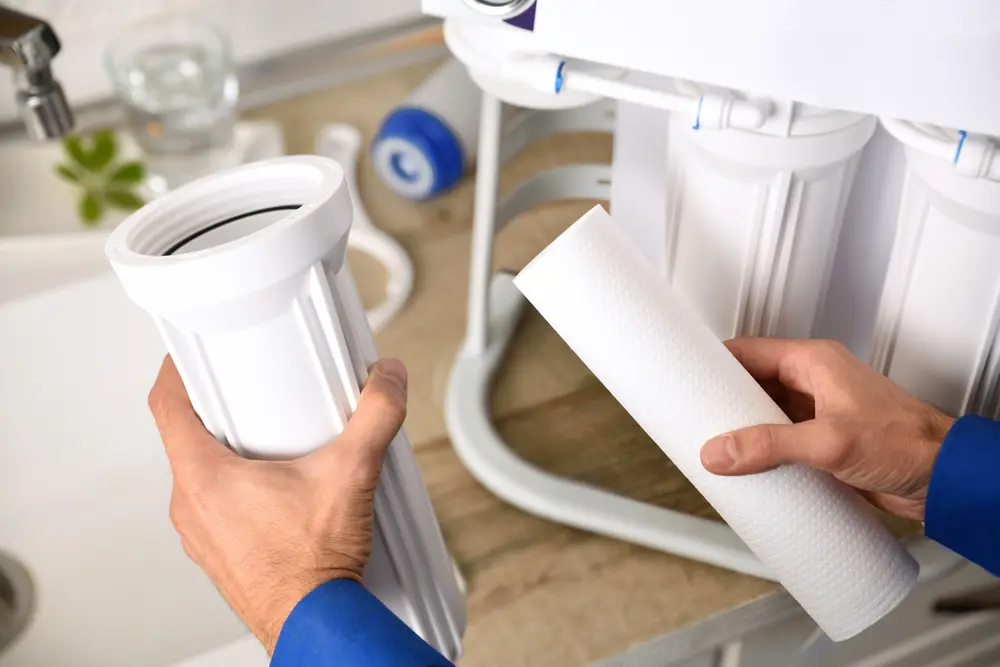
05. Reverse Osmosis Questions
Is Reverse Osmosis-Treated Low-Mineral Water Healthy and Safe to Drink?
Yes, drinking reverse osmosis-treated water is considered safe. In fact, many people prefer the taste and purity of reverse osmosis water over tap water or other types of bottled water. If you’re interested in reverse osmosis systems, speak to the specialists at Serv-All Water Conditioning today!
Is Reverse Osmosis-Purified Water Unhealthy to Drink?
No, reverse osmosis-purified water is not unhealthy to drink. While it does remove some minerals, it also eliminates contaminants, making it safe and clean.
Does a Reverse Osmosis Filter Remove Healthy Minerals From Water?
A reverse osmosis filter removes unhealthy organic material. However, some healthy minerals, such as calcium, magnesium, and potassium, may be removed at the same time. However, it’s important to weigh the effects of leaving these minerals in with taking them out. These minerals can contribute to hard water deposits, scale buildup, and other water quality issues. While some people prefer to retain these minerals in their drinking water, others argue that they can obtain them from other sources, such as fruits, vegetables, and supplements.
Does Reverse Osmosis Leach Minerals From the Body?
No, reverse osmosis does not leach minerals from the body. It simply removes minerals from the water during the filtration process.
Does Reverse Osmosis Filtration Produce Very Acidic Water With Low pH?
No, reverse osmosis filtration does not produce very acidic water with low pH. While RO water may have a slightly lower pH level than tap water due to the removal of alkaline minerals, it is still considered safe and healthy to drink. Some people prefer to add mineral drops or a remineralization filter to RO water to restore its pH balance and make it more alkaline.
I Thought My City's Tap Water Was Safe to Drink. Is This Not True?
City tap water is generally safe to drink, but reverse osmosis can provide an additional level of purity by removing contaminants that might be present at low levels.
How Is RO Water Compared to Bottled Water?
RO water can be comparable to bottled water in terms of purity and taste, but it is more environmentally friendly and cost-effective.
How Effective Is Reverse Osmosis Filtration Compared to Other Methods?
Reverse osmosis is highly effective at removing a wide range of contaminants, often more so than other filtration methods, making it one of the best options for purifying water.
When Should I Change My Filters on My Reverse Osmosis System?
Every year! Here at Serv-All, we will call and send a postcard to remind you that you are due for your routine filter change. The cost is anywhere between $45 and $85, depending on what stage reverse osmosis system you have.
What if I Don’t Use My Reverse Osmosis System All the Time — Do I Still Need to Change the Filters Every Year?
Yes! The reason why you need to change the filter regularly is the water still sits on the filters. Also, if your ice maker is hooked up to the reverse osmosis system, it is constantly sending water to your ice maker.
The whole reason behind a filter change is to protect the membrane filter — the filter that you change out every three to five years. That filter is the heart and soul of the whole system. If that goes bad, your water will taste bad and will cost you more money down the road. Also, if the filters clog up, that could cause damage and break the system. Don’t let this happen to you! Change your system’s filter every year!
